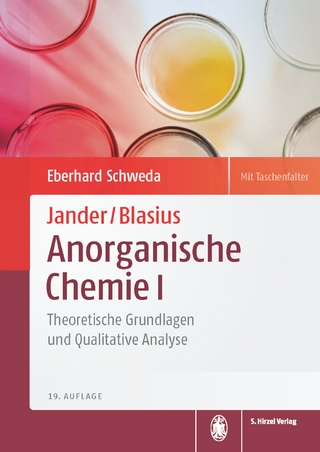
Transition Ion Electron Paramagnetic Resonance
Clarendon Press (Verlag)
978-0-19-855214-7 (ISBN)
- Titel ist leider vergriffen;
keine Neuauflage - Artikel merken
Transition ion electron paramagnetic resonance is an important tool for the identification and characterisation of transition and metal ions. In this book the author presents a new perspective which unifies the main features of field-swept EPR of anisotropic systems, and account for the origin of asymetric lineshapes, linewidth anisotropy and strain broadening. A large number of spectra are shown, as familiarity with the shape of typical spectra is essential to good practice in EPR. The book also includes a wide range of examples including transition ions in crystals, glasses, semiconductors, phase transitions, proteins and other biological systems. This text provides an introduction to transition ion EPR at a level appropriate to beginning graduate students in physics or chemistry. It is also suitable for graduate students from other disciplines with a resonable background in quantum mechanics and spectroscopy, and will be of interest to all those whose work involves the use of transition ion EPR techniques.
Part 1 Introduction to electron paragmanetic resonance: EPR due to mainly two-level systems; some transition-ion EPR spectra; crystal fields and ligand fields. Part 2 Crystal and ligand fields and the spin Hamiltonian: review of atomic theory; superposition model (SPM); molecular orbital theories; the Jahn-Teller effect. Part 3 Spin Hamiltonian parameters: line broadening with fine structure; resolution or ambiguities. Part 4 Experimental methods in CW-EPR: EPR spectrometers principles of design; choice of microwave frequency; low temperature EPR; high temperatures; computers in EPR. Part 5 Linewidths and computer simulation in CW-EPR: power and power-like EPR spectra; quantitative spin determination; statistical models of line broadening. Part 5 Representative examples of transition-metal ion EPR: planar microcycles; oxygen co-ordination; semiconductors; zeolites and other catalysts; irradiated complexes. Part 7 Coupled paramagnetic systems: dipolar coupled dimer complexes; metal-nitroxy and metal-radical interactions. Part 8 Paramagnetic relaxation: classical rate theory; measurement of relaxation times. Part 9 Double resonance: introduciton to the theory of ENDOR. Part 10 Electron spin echo modulation: electron spin echo; ESE experimental; model calculations for ESEEM. Part 11 Biological applciations of transition-ion EPR: mitochondrial electron transport chain; molybdenum-containing enzymes; paramagnetic metal-substituted enzymes. Part 12 Zero-field EPR: introductory theory of zero-field resonance; examples of ZFR. (part contents)
| Erscheint lt. Verlag | 1.2.1991 |
|---|---|
| Zusatzinfo | line illustrations and tables throughout, bibliography |
| Verlagsort | Oxford |
| Sprache | englisch |
| Maße | 150 x 230 mm |
| Gewicht | 1305 g |
| Themenwelt | Naturwissenschaften ► Chemie ► Analytische Chemie |
| Naturwissenschaften ► Chemie ► Anorganische Chemie | |
| ISBN-10 | 0-19-855214-9 / 0198552149 |
| ISBN-13 | 978-0-19-855214-7 / 9780198552147 |
| Zustand | Neuware |
| Haben Sie eine Frage zum Produkt? |
aus dem Bereich


